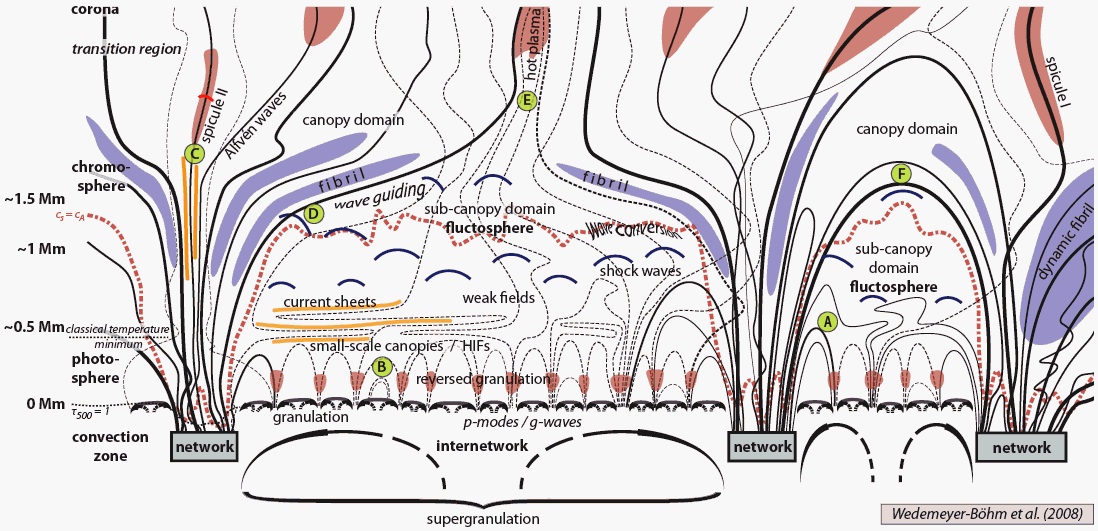"Why is the sun's corona so darned hot?" said study memberWhy is this useful?
James Klimchuk of NASA's Goddard Space Flight Center in Greenbelt, MD.
To recap the problem, the outer atmosphere (corona) of the sun is millions of degrees, while the surface of the son is merely thousands of degrees. So something mysterious between the nuclear fusion of the sun's bulk and the nearly invisible, wispy outer shell of gas is going on.
It can't be just heat flowing out of the sun, because heat flows from hot to cold, not cold to hot. The two big theories were 'wave heating'and 'reconnection'. For wave heating, sound or radio waves from the sun's surface travel to the corona then dissipate into shock waves, dumping energy into the corona. Depending on the wave's frequency and which detectors we have, we can see these waves.
Reconnection says that magnetic loops arc over the sun's surface into the corona and back down. The loops can carry heat from the surface to the corona, and their breaking and reforming can dump energy into the corona. As it happens, magnetic reconnection also causes flaring-- so it can be observed.
The flaws with both theories were that we didn't see the predicted behavior happening. Both make observational predictions, that we just didn't see. We've seen transient waves, but not enough to power the uniform coronal temperatures we see. We see large and small flare events, but again, not enough to drive the coronal temperatures seen.
One solution put forth to solve the "can't see it" part of the reconnection theory was postulating there were lots of microflaresdumping the energy -- flares we couldn't see. So we launched better instruments and, hey, not enough microflaring to deliver.
The next step is to suggest nano-flares. Now, this being science, you can't just say "okay, maybe something smaller than microflares", just because you like the idea. You have to have a reason. Klimchuk (among others) did modeling and simulation work that suggested that nanoflares could exist in the Sun. By modeling, they were able to set observational limits on how visible they were.
And so the recent result is that the nanoflares predicted were observed. They observed the footprints of likely nanoflares in active regions. The idea is (if I grasp it properly), if you see an tiny part of a magnetically active region on the solar surface with surprising million-degree temperatures, and you have a million-degree corona, then you can assume a connection.
As always, this one result isn't the end-all-be-all of the sun. For example, here's an explanatory cartoon from a 2008 paper "Coupling from the photosphere to the chromosphere and the corona" (Wedemeyer et al):

CLICK FOR FULL SIZE.
Okay, the sun's complex. I get it. I'm still psyched about the nanoflares observation, because you can see the result in two different ways:
active regions -> nanoflares -> heats corona -> hot spots at footprints (observed!)
Or...
theory -> model -> observation -> (not seen) -> revision of theory -> model -> observation -> seen!
Science for the Win!
Alex, the Daytime Astronomer
The Daytime Astronomer, Tues&Fri here, via RSS feed, and twitter @skyday




Comments